Essential Strategies for Balancing Work and Life in Construction
Editorial Note: This article was brought to you courtesy of Rose Morrison, managing editor of ...
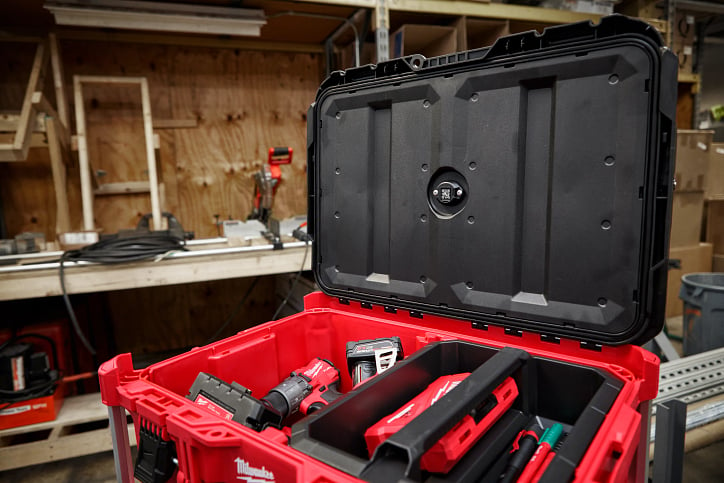
Production of any kind, in any industry, has the capacity to become convoluted, disorganized, and inefficient if not properly managed. The Massachusetts Institute of Technology (MIT) in 2009 in a news post titled “Manufacturing inefficiency” (ref 3) described “modern manufacturing” as “spectacularly inefficient in their use of energy and materials,” citing MIT analysis of energy use of 20 major manufacturing processes that revealed “manufacturing systems […to be] anywhere from 1,000 to one million times bigger consumers of energy, per pound of output, than more traditional industries” and exhibiting “disparate processes” at first blush.
An example the MIT story offers to contextualize manufacturing inefficiency is solar panel manufacturing, which it calls “inherently” inefficient, with methods then that presented an inverse relationship where “the ratio of the energy the panel would produce over its useful lifetime” was lower than “the energy required to manufacture it.” What’s worse, 14 years from the MIT story, solar field installations remain a unique challenge that present operators many inefficiencies stemming from torque variances, a recent whitepaper produced by Milwaukee Tool found. Thankfully, new-to-world solutions like TORQUE-SENSE™ on M18 FUEL™ Controlled Torque Impact Wrenches help deliver greater torque repeatability through proprietary sensors and machine learning algorithms—while utilization data (courtesy of onboard IoT sensors) ensures every trigger pull is recorded, and data can be downloaded for customizable reporting to ensure confident installation.
What’s more, since the MIT story digital twin technology has emerged to empower factory operations managers with a holistic, real-time view of production facilities complete with predictive analytics powered by artificial intelligence and IoT sensors that can simulate real-world equipment and sense equipment failure before wreaking production-halting havoc.
Another production inefficiency occurs due to inventory mismanagement (e.g., bad inventory data), which plagues 51% of records of retail firms (ref 10) and has a “significant impact on performance.” In construction, bad inventory data and management can lead to construction downtime and has led to company profits declining by as devastating as 82%, as was the case for a Zimbabwe-based builder supply company (ref 7).
How might construction companies reduce inefficiency to drive greater operational results and profitability, then? One way is to decrease project inefficiency by focusing on increasing construction productivity through digitization.
A 2016 article by McKinsey (ref 1) pegged construction among the least digitized, rife with disjointed processes and inefficiencies that are primary culprits to less-than-favorable productivity outcomes. I wrote in 2022 (ref 6) how far the industry has come since McKinsey’s 2016 outlook, as well as outlining opportunities and challenges. McKinsey’s recent findings (ref a) estimated $50 billion to be invested in AEC tech between 2020 to 2022, 85% higher than the previous three years. Construction digitization and interoperability play a critical role in decreasing process inefficiencies and bad data, ensuring processes across the entire construction ecosystem are standardized and integrated (so that project managers get real-time inventory alerts, as an example).
Another way to reduce process inefficiencies in construction is through a process called inventory kitting, which we’ll turn our attention to in this article.
The Oxford English Dictionary (OED) refers to kitting in the verb form, “kit,” meaning to “equip (someone or something) with a uniform, an outfit, personal effects, equipment, etc.” They trace the first use of the term “kitting” to the 1700s in the writings of naturalist writer and traveler Thomas Pennant but also note that a noun form of the word “kitting” was recorded as early as the Middle English period (1150—1500).
Manufacturing company, AMS, defines kitting as “the process of gathering and combining a collection of goods or SKUs together to create a new SKU” where multiple SKUs are “combined into the same box,” used primarily by companies as a method to “enhance their order fulfillment operations by reducing lead time, cost, and mistakes.”
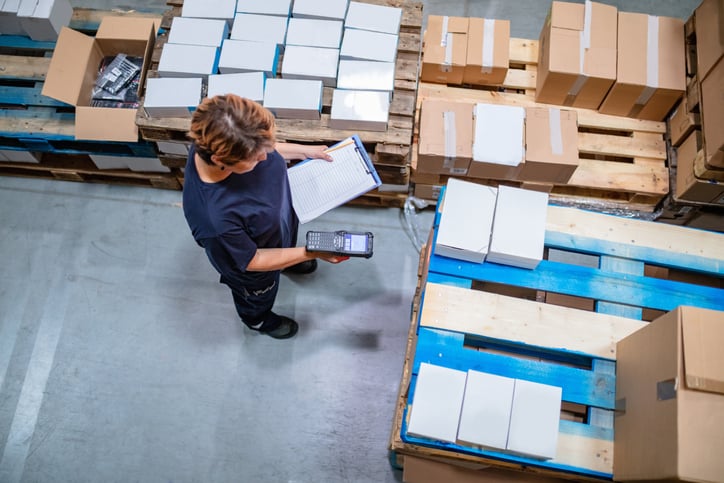 Kitting can be used in conjunction with other important inventory tactics, like ABC analysis, scholars writing for Manufacturing Letters point out (ref 2)—wherein “Parts grouped based on group technology and COI [i.e., cube order index] were allocated to minimize walking distances and reduce material handling costs.”
Kitting can be used in conjunction with other important inventory tactics, like ABC analysis, scholars writing for Manufacturing Letters point out (ref 2)—wherein “Parts grouped based on group technology and COI [i.e., cube order index] were allocated to minimize walking distances and reduce material handling costs.”
Kitting in supply chain across industries (e.g., ecommerce, retail, manufacturing, warehousing, even used by construction inventory managers) is used to gather and group like items into a coherent collection or “kit” for more efficient fulfillment, distribution, and tracking.
Writing for Oracle NetSuite, David Luther (ref 5) defines kitting as a process typically used in warehouse settings, where “different but related items are ordered, packaged and shipped together as a single ‘kit’” and offers the below kitting process flowchart, a five-step procedure where warehouse managers seek to:

Pictured above: How a typical kitting process flow chart could appear. Image Source: Oracle NetSuite
In a kitting process, each product still maintains its unique SKU (stock keeping unit) as a unique identifier, but all these individual products and SKUs are combined into one, unified SKU.
As Oracle notes, a company who manufactures products can use kitting to ensure that, “when the company receives an order, it picks the individual components [based on where they’re located in a warehouse] and packages them together to fulfill the order.” In construction, where inventory managers are often managing a complex network of jobsites, kitting makes inventory tracking much more effective and intuitive—instead of having to manually scan items out and back in, a simple barcode scan of an entire kit can yield everything that’s associated to it, which can be checked against and tracked in real time as these kits are deployed to the field.
Scholars writing for Manufacturing Letters observe (ref 2) many potential benefits of kitting “when done correctly,” including:
As Oracle notes, the terms “kitting” and “bundling” are often used interchangeably, while kitting is also sometimes mentioned in the same breath as another, somewhat related term: Packing.
So, what’s the difference between kitting, bundling, and packing?
Kitting vs Bundling
As Oracle notes of kitting and bundling, “kitting specifically defines a set of complementary items that can be sold as a new product, while bundling is a broader term applied to any grouping of items.”
Shopify also offers a helpful breakdown of kitting vs bundling below:
| Kitting |
Bundling | |
| Purpose |
|
|
| Process |
|
|
| Used In |
|
|
| Benefits |
|
|
| Examples |
|
|
What Is the Difference between Kitting and Packing?
What about packing? Packing describes the process in general of preparing goods for distribution and shipping. Meanwhile, kitting, fulfillment company DCL Logistics describes, is “slightly more specific,” adding that kitting is…
“Used in tandem with assembly, kitting happens when a group of products requires a sequential order of packing or preparation before shipment. Kitting is often done with products like subscription boxes, assembled products, or built-to-order items” (ref 9).
Now that we’ve discussed what kitting is, what a typical kitting process looks like, and the benefits of kitting, what are some inventory kitting examples across industries?
What does “kitted” mean in manufacturing? Kitting in manufacturing can be used to help increase the speed at which product assembly occurs by improving workflows and time management from warehouse to assembly line (i.e., ensuring workers have what they need on the assembly line to complete daily tasks and that the assembly process doesn’t experience downtime due to poor planning).
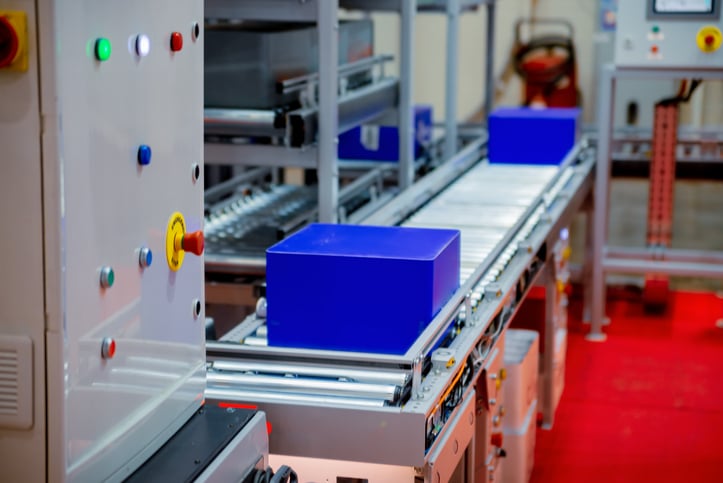
Kitting (also called tool kitting) in construction project is a process used by inventory managers to tool up jobsites more efficiently. In fact, scholarly case studies have shown kitting logistics to improve onsite work performance in construction projects (ref 8).
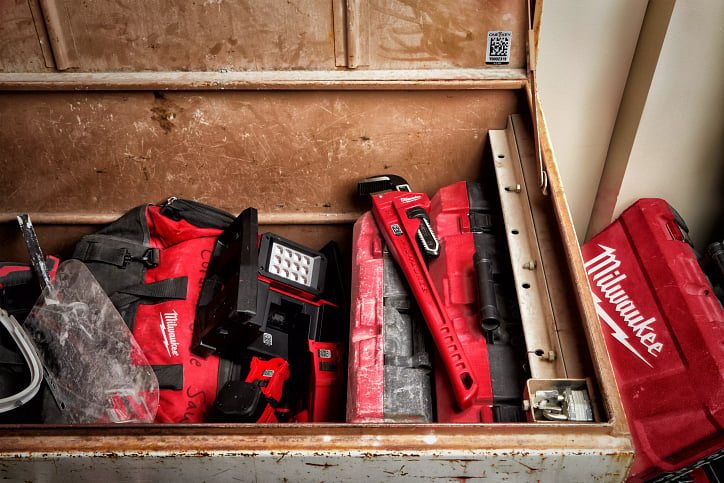
Job boxes or PACKOUTs can be used to organize miscellaneous tools and equipment needed to accomplish a day’s work but that are easily misplaced in the chaos of an active building site. The tool kitting feature in One-Key lets inventory managers group these like items to ensure everything that’s stored physically in a job box or PACKOUT is easily findable and accounted digitally in the app. And while inventory managers in warehouses and supply chain for companies across industries like retail and ecommerce may use barcodes, purpose-built equipment tagging asset ID tags can deliver jobsite-durable adhesives and superior scanability, while Bluetooth® tags can provide location updates and in-the-field tracking. Meanwhile, pairing an asset ID tag or Bluetooth tag with a kit can help streamline the process as a simple scan on a centrally located tag (e.g., under the lid of a PACKOUT, or even handier, on the outside of it) can provide a picklist that can be checked against. At the end of the day, an errant smart tool’s location can be pinpointed with in-vicinity finding, whereas a Bluetooth tag with an onboard speaker can be “ringed” for quick recall.
What’s more, outside of traditional construction inventory management, companies offering prefab assembly to construction companies may use inventory management to improve shop workflow efficiency and client project coordination, as well as use kitting to “kit out” materials and tools to maintain better organization around the shop.
What is an example of kitting in a warehouse?

Typically, in warehouses, pickers (and even robots) navigate the aisles of the warehouse to grab necessary products that will be grouped and sent en masse.
Kitting is often used in warehouses to help large companies fulfill orders quickly by connecting the dots (and creating better flow) to where inventory is initially stored in the warehouse, to the designated assembly area where orders are packed and readied for shipping.
Similarly, tool cribs in the construction industry (from above example) will store equipment in specific zones (e.g., reciprocating saws, table saws, oscillating saws in their own specific subcategories in a larger “saw” category) that will be kitted (vernacularly known as “tooling up a job”) and sent to the field.
Perhaps the most amusing example of kitting in a warehouse is seen in the episode, “Golden Ticket” (ref 4) of the popular NBC show, The Office, wherein Dunder Mifflin Paper Company regional manager Michael Scott conceives a sales promotion paying homage to the 1971 film, Willy Wonka & the Chocolate Factory. In Michael’s sales promo, he distributes golden tickets, similar to the five golden tickets distributed to children by Willy Wonka in the movie which granted them a once-in-a-lifetime tour of the Wonka factory and a lifetime supply of chocolate. In Michael’s iteration, customers receiving a golden ticket in their regular order of Dunder Mifflin paper would be eligible for a 10% discount for a period of one year.
However, not knowing the intricacies of how warehouse foreman Daryl Philbin organizes the shipping area, Michael inadvertently places all five golden tickets into a single client’s order, Bluecross (Dunder Mifflin’s largest client), in effect leading to a discount of 50% considering no disclaimer “limit one per customer” had been added to the golden tickets. I’ve included the transcript (and embedded clip) of this exchange for your enjoyment below.
Michael: Sir. I placed a bunch of golden tickets into five separate boxes and somehow they all ended up with Blue Cross. How does this happen?
Darryl: Were the boxes near each other?
Michael: Irrelevent.
Darryl: I put three pallets on the truck to Blue Cross once a week. They use a lot of paper.
Michael: OK, I'm going to ask you something and I want you to be honest. What is a pallet?
Many retailers and ecommerce companies use kitting as part of their fulfillment process to increase efficiency.
RyderEcommerce (by Whiplash) offers some examples of how kitting can be used in ecommerce: e.g., subscription boxes (think Dollar Shave Club curated boxes), packed sets/gift sets, and preassembled customizable goods.
You can start kitting with One-Key, Milwaukee Tool’s free-to-use connectivity platform and accompanying inventory app! We recommend viewing our tool kitting feature knowledge base article to learn more about the kitting functionality and how you might customize it for your personal or business inventory needs.
We recommend:
The construction industry has come a long way in terms of digitization—kitting within the construction supply chain can help ensure a more streamlined tooling up of jobs with fewer inefficiencies and bad data confusion. What’s more, taking your digitization a step forward, funneling relevant inventory data to your various project team’s tech stack through integrations (e.g., BIM and asset management) can help keep necessary parties well informed, projects afloat, and clients happy.
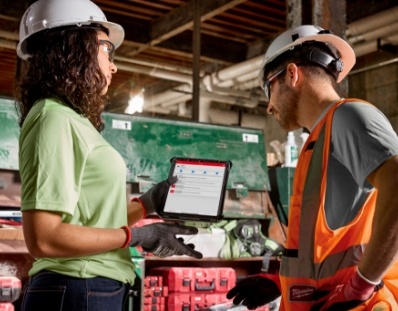
In this white paper, learn 5 advantages of digitizing your construction inventory in the cloud. Increase productivity, limit downtime, & more.

Sign up to receive ONE-KEY™ news and updates.
Editorial Note: This article was brought to you courtesy of Rose Morrison, managing editor of ...
Editorial Note: This article was brought to you courtesy of Rose Morrison, managing editor of ...
Editorial Note: This article was brought to you courtesy of Rose Morrison, managing editor of ...


